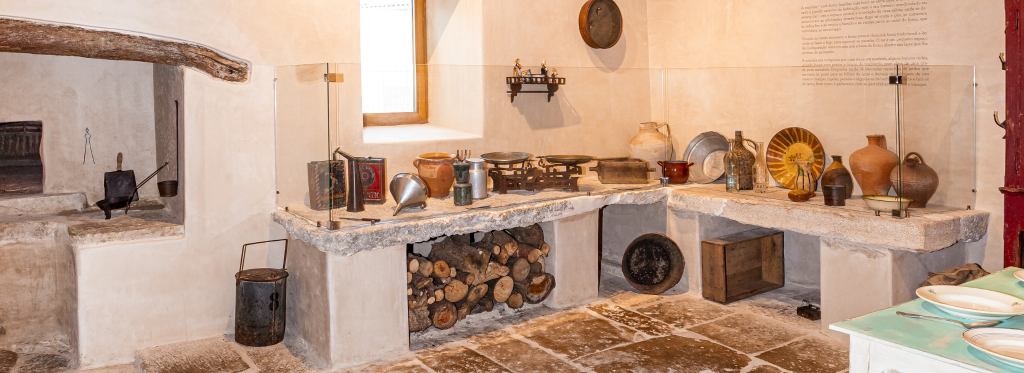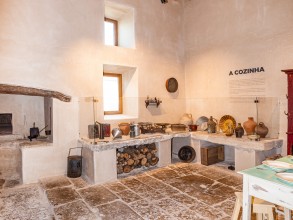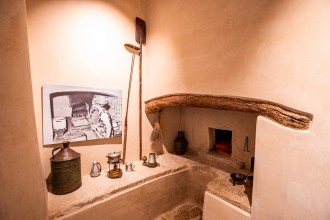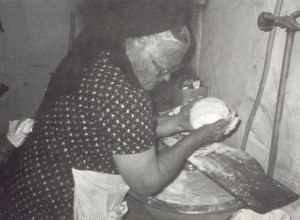PT | EN
With its round or rectangular shaped family-size oven the door of which opens inwards adjacent to the outer wall, the kitchen was the centre-piece and heart of the saloio residence where the domestic duties were performed.
Here bread was baked, meals were eaten and the family and visitors gathered together warming themselves with much cosiness by the heat of the oven.
Located in the north-western corner, the oven has a chimney, traditional-style opening and hearth where the flames of the fire heated the pots and other utensils. The hearth is a small semicircular space located under the oven's door and set on slabs in the form of a parapet.
The kitchen consisted of a wooden table, some crude benches, a cupboard with dishes and crockery, as well as a rack for dishes.
It also had stone-covered benches that served as a place to put water jugs and other utensils for general household use, such as clay or enamel bowls, pans and brass pots, as well as a cruet rack with small bottles of olive oil and vinegar.
Bread
Bread was the most sacred and coveted of all the different types of food. In general, saloios ate wheat bread or a mixture of it made from wheat and corn.
The process of kneading, boiling and baking took place every eight days without fail and was a fun time in every household.
This task was normally the responsibility of the women, although some men also dedicated themselves to this important task.
In the oldest and best-kept houses, it was done in a stone trough that was passed down through generations, or in Redondo earthenware bowl purchased in grocery stores or at fairs.
A cross was then drawn on the dough in bowls prepared for the addition of yeast as the following was said:
'May God make you wholesome
Because I already did my part.
May God augment you.
In honour of Saint Vincent.
May God augment you
For the sake of all folk.'
Once the leavened dough had been divided into small portions, the loaves – whose tops, bottoms and crusts were shaped with quick movements – were placed on flour sprinkled lightly onto a very long wooden shovel designed to reach the back (and hottest part) of the oven.
Then the following prayer was recited three times:
'May God augment you
For us and for God
And to be offered with God's love'
or
'May God augment you
For me, for my folk
And to be offered to all'











